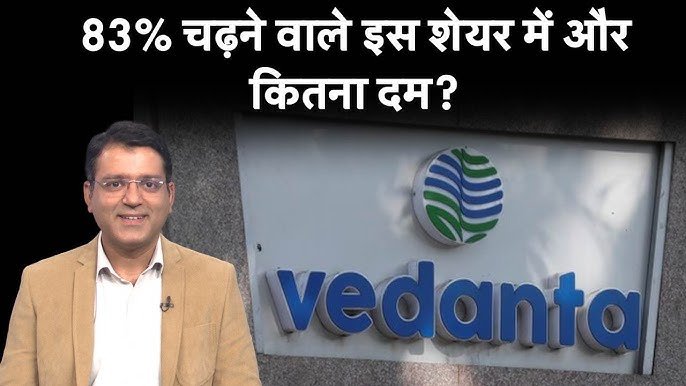The Vedanta share price saw a sharp drop of 4.5% on July 9, 2025, following the release of a bombshell report by well-known short seller Viceroy Research. The controversial report took direct aim at Vedanta Ltd’s parent company, Vedanta Resources, accusing it of financial mismanagement, misleading practices, and even likening its corporate structure to a Ponzi scheme.
Let’s break this all down—what’s happening with Vedanta, what the report really says, and why investors are suddenly jittery. If you’re tracking metal stocks, debt-laden conglomerates, or just watching the Vedanta share price, this one’s worth diving into.
What Sparked the Vedanta Sell-Off?
At around 12:25 PM IST on July 9, Vedanta shares were trading at ₹435.6 apiece, reflecting a 4.5% drop. In fact, the stock had fallen by as much as 7% earlier in the day. Meanwhile, Hindustan Zinc Ltd (HZL), another company under the Vedanta umbrella, also slipped by 2.6%.
So, what triggered this mini market meltdown?
Viceroy Research—famous for exposing corporate frauds like Wirecard and Steinhoff—released a scathing report targeting Vedanta Resources. It called the group “financially unsustainable and operationally compromised,” and even likened its business model to that of a Ponzi scheme.
That’s some serious stuff.
Viceroy’s Shocking Allegations
Let’s get right into what Viceroy had to say.
The crux of their argument? Vedanta Resources is essentially a “parasite” company—one with no significant business operations of its own—that survives by sucking money out of its “host”, which in this case is Vedanta Ltd.
According to the report, this parasitic structure creates a vicious cycle: Vedanta Resources has huge financial obligations, and to meet them, it extracts dividends, fees, and cash flows from Vedanta Ltd—weakening the host and threatening its viability.
And here’s the punchline: Viceroy says this setup “resembles a Ponzi scheme.”
That phrase alone was enough to send the Vedanta share price tumbling.
The “Looting” of Vedanta Ltd
In stronger words than most analysts would dare use, Viceroy accused Vedanta Resources of “looting” Vedanta Ltd. Their argument centers around the idea that Vedanta Resources has no cash-generating operations of its own and is being kept afloat by the funds pulled from Vedanta Ltd.
Let that sink in: The parent company, Vedanta Resources, is essentially surviving off the wealth of its child company, Vedanta Ltd—and not in a good way.
Interest Rates That Don’t Add Up
Another key highlight from the report is a glaring mismatch in Vedanta’s reported interest rates.
According to Viceroy, although Vedanta Resources reduced its gross debt by $3.6 billion since FY21, its effective interest rate ballooned from 6.4% to a whopping 15.8%. That’s a 145% increase!
Even more suspicious? Viceroy says they couldn’t reconcile this high-interest expense with the borrowings disclosed by the company.
Translation: The numbers just don’t add up.
Accounting Tricks and Artificial Profits?
It doesn’t stop at the interest rates.
Viceroy also accused Vedanta of capitalizing expenses across its operating companies to make profits appear inflated. That means certain costs that should be booked as expenses are being treated as capital investments—pumping up the balance sheet artificially.
Viceroy labeled this a “material misrepresentation.”
If true, that’s not just bad accounting—it’s potentially deceptive.
A Troubled History of Cash Maneuvers
The report claims Vedanta has a habit of promoting questionable asset sales just to raise temporary bridge loans. And sometimes, these moves reportedly bypass the approval of minority shareholders or even company directors.
This paints a picture of a company in financial distress—doing whatever it takes to stay afloat, even if it means playing a high-stakes game with shareholder trust.
And for investors focused on the Vedanta share price, this kind of behavior is a huge red flag.
Hindustan Zinc: The “Legal and Financial Minefield”
Hindustan Zinc Ltd, another company under the Vedanta group, wasn’t spared in the report either.
Viceroy called HZL a “legal and financial minefield.” The research firm pointed to contract breaches, regulatory violations, and related-party transactions designed to extract value at the cost of the Indian public.
In plain English? They’re saying HZL is a legal mess and a financial time bomb.
Vedanta’s $4.9 Billion Debt Load
As of March 31, 2025, Vedanta Resources’ standalone net debt stood at a staggering $4.9 billion.
Let that figure sit with you for a moment.
Despite attempts to trim the fat—like its $3.6 billion debt reduction since FY21—debt obligations continue to choke the business. Worse still, the company isn’t generating any operating free cash flow. Viceroy argues that its ability to service debt relies purely on the dividends and “brand fees” it squeezes out of Vedanta Ltd.
And that’s not just unsustainable—it’s a ticking time bomb.
Vedanta’s Restructuring: Too Little, Too Late?
Remember how Vedanta had once tried to go private in 2020? That plan failed. So in 2023, Anil Agarwal floated a new one—to split the company into multiple listed entities.
Sounds like a fix, right?
Well, Viceroy doesn’t think so. They believe this restructuring is just another attempt to shuffle assets around without addressing the core issue: Vedanta Resources’ reliance on Vedanta Ltd’s cash flow.
So, will the breakup actually help? Investors seem doubtful, especially judging by how the Vedanta share price reacted.
How Is the Market Reacting?
Markets don’t like uncertainty—and they hate the word “Ponzi.”
With Vedanta shares dropping by 4.5%, and others in the group—like Hindustan Zinc and Hindustan Copper—also under pressure, it’s clear that the report rattled investor confidence. The Nifty Metal Index, too, was down by 1.7%.
If you’re holding Vedanta or tracking the Vedanta share price, this kind of turbulence matters. A lot.
Should Investors Be Worried?
Absolutely. While Viceroy’s report is not the final word—it’s a short seller’s opinion after all—it does highlight serious structural concerns. Whether you believe the “Ponzi” comparison or not, the core issues—sky-high debt, questionable accounting, and dependence on internal cash transfers—are hard to ignore.
At the very least, investors need to tread carefully.
Final Thoughts: Is Vedanta Standing on Shaky Ground?
The Vedanta share price didn’t just fall by accident. It reacted to a hard-hitting, data-rich, and scathing critique from a reputable short seller.
Whether Vedanta can bounce back from this storm depends on more than just PR spin. It will require deep structural changes, genuine transparency, and a willingness to address the ugly truths that are now public.
And investors? They need to watch closely—because in the high-stakes world of mining conglomerates and debt-driven growth, the ground can shift fast.
Read More: Crizac Share Price Surges on Stock Market Debut: Should You Buy, Sell, or Hold in 2025?
Conclusion
To wrap it all up, the Vedanta share price is under serious pressure—and for good reason. Viceroy’s report isn’t just a casual criticism; it’s a major allegation that points to deep-rooted structural flaws in Vedanta’s financial ecosystem. While the market continues to digest these claims, investors must stay cautious, skeptical, and informed.
In a game where financial smoke and mirrors can mislead even the sharpest minds, it’s crucial to separate fact from fiction. Because when the cracks in the foundation start to show, even the strongest towers can come crashing down.









